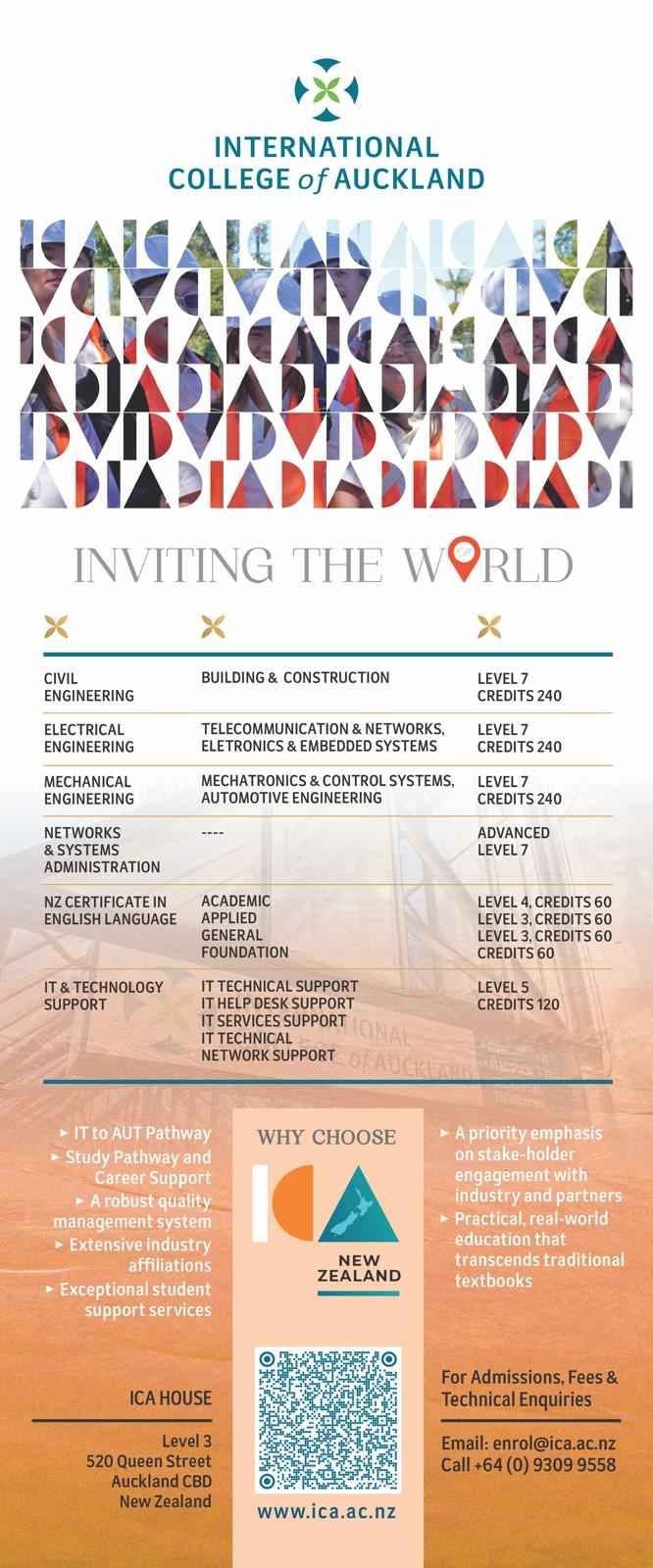How to get around – transport
New Zealanders often choose to walk where possible. Walking is good exercise and safe during the day. Try not to travel alone at night. When traveling at any time, take all the normal precautions you would at home. If you do have any travel queries or questions on how to get around the city you are in or New Zealand, you can visit your local I-SITE Visitors Centres (refer to p. 51). Bicycles – cycling/biking
Riding a bicycle is a popular form of transport for short journeys and mountain biking off-road is a popular sport. Under New Zealand law, you must wear a helmet when cycling, and you must have front and back lights on at night. Road rules apply to cyclists (refer to ‘Cars and Driving’ on p. 28 for how to get a copy of the Road Code.) What public transport is best for you? Public transport varies because of the small numbers of people using it at certain times, e.g. outside of the regular commuting times in the morning (7:30 am – 9 am) and evenings (5 pm – 7 pm). However, there will generally always be some form of public transport available in your area. Student discounts are offered on some public transport. Check before you buy your ticket. Buses
Find out from local people, your education provider, or your host family about the local bus service. You will need to get a bus timetable. In most larger towns and cities buses will be regular throughout the day but less regular on weekends. During off-peak times, check the timetable before you go to the bus stop. Timetables are available in shops, are posted at bus stops, and are also available on the internet. At rush hours the buses can get full. In New Zealand, there is a limit to the number of people who can ride on a bus at a time. If a bus is full, it will not stop at the bus stop to pick more people up. If you do take a bus late at night, sit near the driver rather than at the back of the bus. There is a network of long-distance buses that travel throughout New Zealand.Trains
There are two local train lines in Auckland and more in Wellington. If you live near a train line these can be good modes for daily travel. There are very few long-distance trains. Check with a local travel agent if you are planning long-distance travel or look under Tranzrail in your local telephone book or go to: http://www.tranzmetro.co.nz. If you ride a train late at night, it’s safest to sit in the driver’s carriage. Taxis
Taxis cost more than other public transport but can be good for occasions when several people are sharing the fare or when public transport is inconvenient or not available, such as late at night. Ferries
Parts of Auckland and Wellington are well served by efficient harbor ferries that can be fast, economical, and pleasurable ways to travel. A very regular “Interisland” ferry service operates between the North and South Islands. Free phone 0800 802 802 or go to: www.interislandline.co.nzAeroplane
You can travel by plane to most parts of New Zealand. This form of transport costs the most but it’s also the quickest. If you buy your tickets in advance or over the Internet, you may save money. You will need a credit card to book and purchase flights over the Internet. When you check in at the airport you will be given a seat number on the plane. Generally, you will need to arrive at the airport at least 30 minutes before your departure time. It is also important to take a photo ID with you if you are using an E-Ticket (electronic ticket). The main domestic airlines are listed below:
- Air New Zealand: www.airnewzealand.co.nz
- Qantas New Zealand: www.qantas.co.nz
- Origin Pacific: www.originpacific.co.nz
- Jet Star: www.jetstar.co.nz

